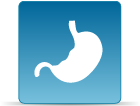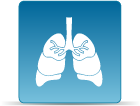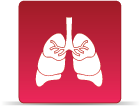Beryllium and compounds
CASRN 7440-41-7 | DTXSID4023913
- Toxicological Review (PDF) (94 pp, 320 K)
- IRIS Summary (PDF) (51 pp, 284 K)
Noncancer Assessment
Reference Dose for Oral Exposure (RfD) (PDF) (51 pp, 284 K)
Last Updated: 04/03/1998
| System | RfD (mg/kg-day) | Basis | PoD | Composite UF | Confidence |
|---|---|---|---|---|---|
| Gastrointestinal | 2 x 10-3 | Small intestinal lesions |
BMD10
: 4.6 x 10-1 mg/kg-day |
300 | Low/Medium |
Reference Concentration for Inhalation Exposure (RfC) (PDF) (51 pp, 284 K)
Last Updated: 04/03/1998
| System | RfC (mg/m3) | Basis | PoD | Composite UF | Confidence |
|---|---|---|---|---|---|
| Immune, Respiratory | 2 x 10-5 | Beryllium sensitization and progression to CBD |
LOAEL
(HEC): 2.0 x 10-4 mg/m3 |
10 | Medium |
Cancer Assessment
Weight of Evidence for Cancer (PDF) (51 pp, 284 K)
Last Updated: 04/03/1998
| WOE Characterization | Framework for WOE Characterization |
|---|---|
| B1 (Probable human carcinogen - based on limited evidence of carcinogenicity in humans) | Guidelines for Carcinogen Risk Assessment (U.S. EPA, 1986) |
| Carcinogenic potential cannot be determined (Oral route) | Proposed Guidelines for Carcinogen Risk Assessment (U.S. EPA, 1996) |
| Known/likely human carcinogen (Inhalation route) | Proposed Guidelines for Carcinogen Risk Assessment (U.S. EPA, 1996) |
- B1; probable human carcinogen. Based on the limited evidence of carcinogenicity in humans exposed to airborne beryllium (lung cancer) and sufficient evidence of carcinogenicity in animals (lung cancer in rats and monkeys inhaling beryllium, lung tumors in rats exposed to beryllium via intratracheal instillation, and osteosarcomas in rabbits and possibly mice receiving intravenous or intramedullary injection), beryllium is reclassified from a B2 (inadequate human data) to a B1 probable human carcinogen (limited human data) using criteria of the 1986 Guidelines for Carcinogen Risk Assessment. Using the 1996 proposed Guidelines for Carcinogen Risk Assessment, inhaled beryllium would be characterized as a "likely" carcinogen in humans, and the human carcinogenic potential of ingested beryllium cannot be determined.
- This may be a synopsis of the full weight-of-evidence narrative.
Quantitative Estimate of Carcinogenic Risk from Oral Exposure (PDF) (51 pp, 284 K)
Information reviewed but value not estimated.
Quantitative Estimate of Carcinogenic Risk from Inhalation Exposure (PDF) (51 pp, 284 K)
Inhalation Unit Risk:
2.4 x 10 -3 per µg/m3
Extrapolation Method:
Relative risk
Tumor site(s): Respiratory
Tumor type(s): Lung cancer (Wagoner et al., 1980)
- Human Health Benchmarks for Pesticides (HHBP). This database provides human health benchmarks for pesticides that may be present in drinking water.
- Office of Pesticide Programs Pesticide Chemical Search. This database provides links to health effects information and registration status for pesticides.
- Chemistry Dashboard. This database provides information on chemical structures, experimental and predicted physicochemical, and toxicity data.
You will need Adobe Reader to view some of the files on this page. See EPA’s PDF page to learn more.





